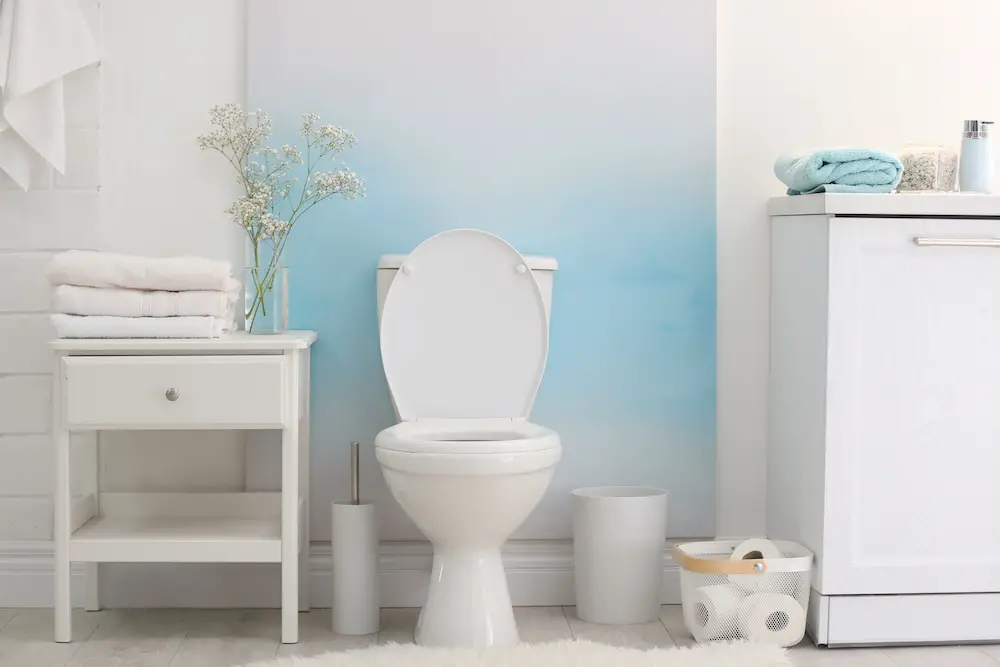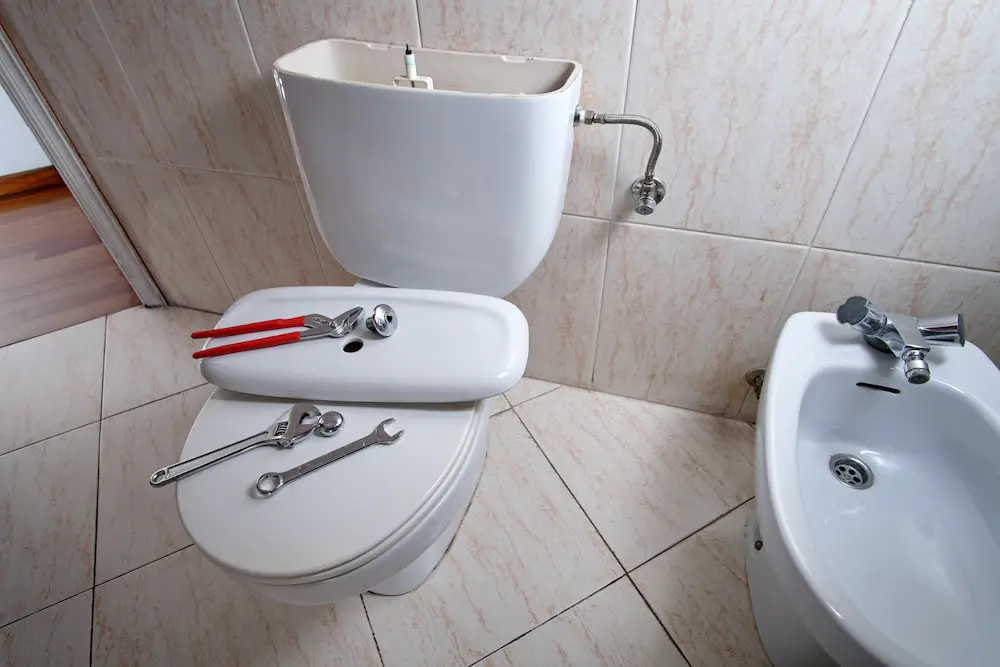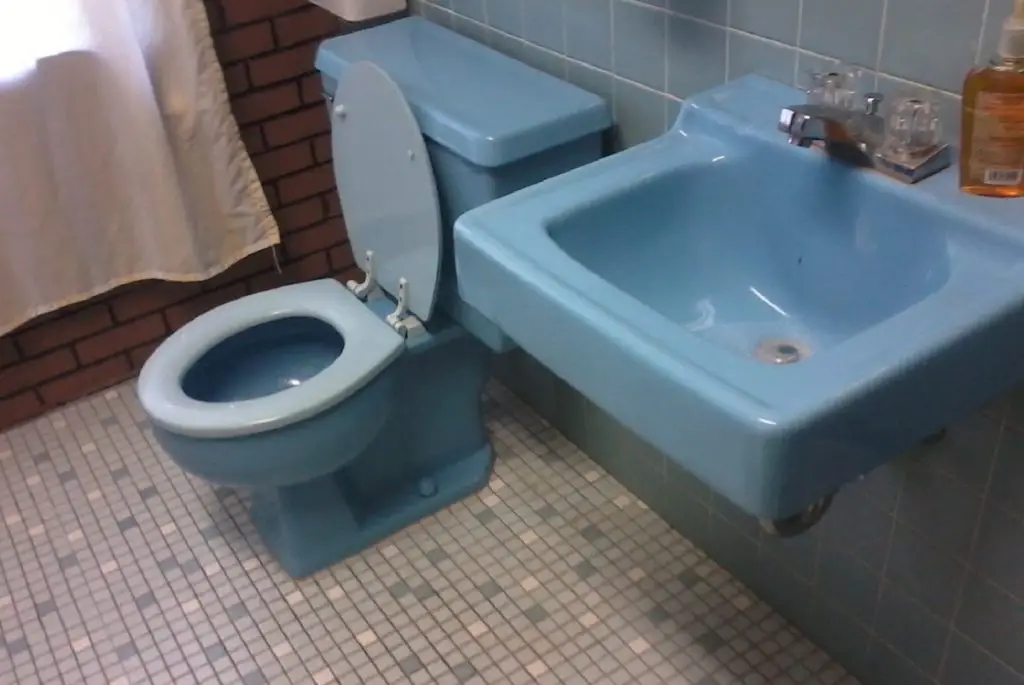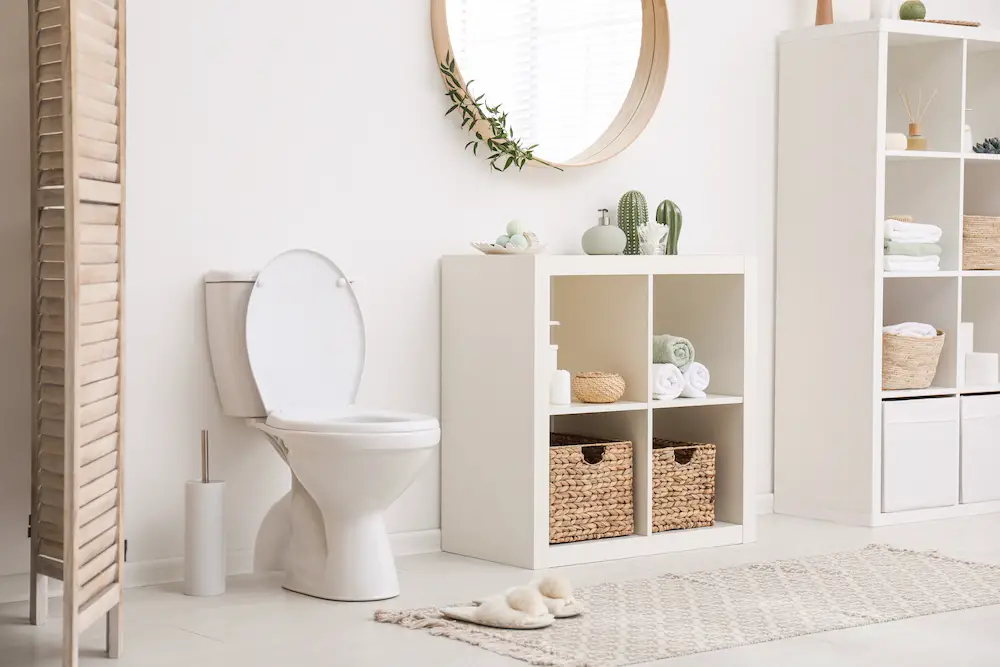Whenever you find flushing issues, leaks, clogs, or physical damage to your toilet, it can turn out to be an unpleasant experience.
During those times, you end up thinking that you must have done something wrong to cause such trouble.
You might also be wondering, how long do toilets last after purchasing and installing them?
Does the entire fixture need replacement, or can you rely on your inner handyman to get it working for several more years?
While the topic in question seems pretty straightforward, we shall discuss the several factors that make a toilet last its intended lifespan.
How Long Do Toilets Last?
Manufacturers make modern toilets using stable porcelain ceramics, vitreous china, and other ceramic glazing materials.
You will also find toilets made of plastic and metals such as stainless steel, copper, or brass.
However, the latter seems more profound in commercial and public settings.
While plastics are quite flimsy and metals tend to corrode and dent over a few years, ceramics have a much longer degrading duration.
If you check online, you will find sources making vague citations that ceramic toilets can last between 10 and 50 years.
This metric is valid, but the exact duration is also dependent on item quality and the availability of a particular model’s components.
Good pre-sales handling and proper installation are also significant determining factors for how long a toilet lasts.
Of course, all of these factors happen before you start using the toilet at home.
Once a toilet gets installed, the number of users and how well it gets maintained also affect its lifespan.
Different Brands
If you check the market, you will find well over 1000 different brands manufacturing and distributing toilets worldwide.
Many of these brands are quite new, and they compete by providing new designs that match more expensive models from established brands.
Some toilets are pretty cheap, and you will find that you lost a bargain as soon as their quality starts to give way.
Only three brands seem to rise to the top in an otherwise competitive playing field: Toto, Kohler, and American Standard.
Nevertheless, other popular brands include Gerber, Duravit, Geberit, Jacuzzi, Hansgrohe, Vitra, Cotto, and Eago.
While these brands provide lots of options for different price tiers, all of their products carry the mark of proven quality.
Availability of Parts
The ceramic bowl and water closet could last even longer than 50 years with proper use and care.
However, the parts that go with it, the flushing mechanism, the plastic seat, and the water supply assembly, are always subject to wear and tear.
As a result, these parts tend to break and require replacement every few years.
In that case, your particular toilet can only last until the manufacturer starts fading out compatible parts.
Luckily for you, most toilet components tend to have a universal design, and you can mix and match different branded parts.

Pre-Sales Handling
Handling, in this sense, involves every logistical aspect, starting from the factory floor, warehouse storage, packaging, transit, and display.
With a trusted brand such as Toto toilets, you need not worry about what happens in their factories or warehouses.
Instead, you only need to scrutinize how a retailer handles its products and how a contractor takes care of the fixture during installation.
It would be best if you asked the following questions:
- Does it have enough protective padding inside its packaging?
- Can you see dents, cracks, or scratches on any surface?
Every time a new toilet reaches your doorstep or is released from a store, you need to sign a document for it as the receiver.
This document will be the retailer’s insurance policy proving that you received the item in good condition.
Before signing the receipt, check that everything about the item is in tip-top condition.

Proper Installation
Each brand-new toilet comes with a spec sheet or installation manual.
It could be a small piece of paper included in the packaging or a downloadable document from the manufacturer’s website.
Following these instructions to the letter is paramount to making the toilet last its entire intended operational lifespan.
It will tell you how far a rough-in should be from the base of the wall.
A rough-in that is too far from the wall can make the toilet look awkwardly placed.
Alternatively, a rough-in that is too close to the wall can make it impossible to install the toilet at all.
Typically, a skilled person installing a toilet can get by without these instructions since they can make their own measurements.
Also, take note of where removable, non-ceramic components should go.
The seals, o-rings, flushing system, flapper, and floor flange should be in the right place.
Correct Handling of Toilets
A toilet is more likely to have a relatively short useful life in any household the more people get to use it.
People weigh differently, and the way people sit may or may not negatively affect the fixture’s longevity.
Each use exposes the ceramic to a risk of new cracks or scratches, some of which could be impossible to repair.
To ensure that your toilet has a longer service life, clean it regularly in and out.
In addition, avoid using each component in a manner not intended for it and prevent sharp objects from getting in contact with the ceramic surface.
Water Quality
Water quality is also a factor that goes hand in hand with the correct handling of plumbing fixtures.
If you live in an area where hard water is a problem, you should equip your water supply system with a water filter.
Hard water filters minimize repair work by protecting your fixtures from frequent damage caused by debris in hard water.
Reasons for Toilet Replacement
If a toilet or some parts are beyond repair, getting a replacement might be the only way to go.
After all, a well-functioning toilet is necessary for proper sanitation in every home.
The following aspects will help you justify whether a repair is in order or a complete replacement is inevitable:
Efficiency
Among plumbing fixtures, toilets account for about one-third of a household’s water consumption.
If your toilet has been around since the early ’90s, it probably consumes more water than what the government mandates.
Replacing your toilet with a newer model ensures that you can cut back on your water bills.
Similarly, a toilet that leaks, clogs, and requires more than a single flush each use will need your immediate attention.
You might be able to resolve this by replacing smaller components immediately.
However, if your toilet requires repairs every so often, it might be a good time to replace the entire thing.
Surface Damage and Cracks
While some indications of minor surface damage on the ceramic are negligible, they can also reduce your toilet’s efficiency in the long run.
Imperfections in the interior cause dirt and debris to latch onto the surface, making it more difficult to clean.
If your toilet has a crack, it will have more chance of leaking water.
Replace your toilet immediately after the first signs of leaks from cracks.
Corrosion
Rust only affects the metallic components of your toilet, which means you may not need to replace the whole fixture.
Check for corrosion regularly, and replace the parts as needed.
Water Pressure Changes
Drastic changes in water pressure may affect how your toilet functions.
If the water pressure drop reduces your toilet’s flushing capacity, you may need to replace the flushing mechanism.
Otherwise, you may need to replace your toilet with a model that can work efficiently with little water pressure.
Comfort and Aesthetics
Comfort and aesthetics do not necessarily affect a toilet’s lifespan, and it is up to you whether to get a replacement based on these factors.
Toilets are not a one-size-fits-all fixture, and taller people might need a toilet with a higher seat.
Similarly, an existing toilet may not go well with the appearance of a newly renovated bathroom.

Even if your toilet still functions well, it may look outdated.
Modern toilets come in different shapes and color shades to match your bathroom interiors.
You can consider a one-piece or two-piece toilet. One-piece toilets can be cleaner because of fewer crevasses to collect grime. But two-piece toilets generally cost a little less than one-piece ones.
Having a Long-Lasting Toilet
So, how long do toilets last? The short answer is they can last a very long time, given correct use and regular maintenance.
By looking after your toilet, it will have almost the same condition and quality as produced in the factory and after installation.


